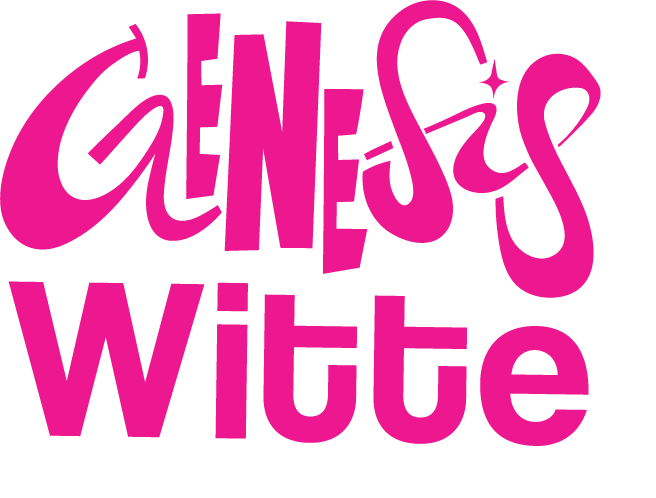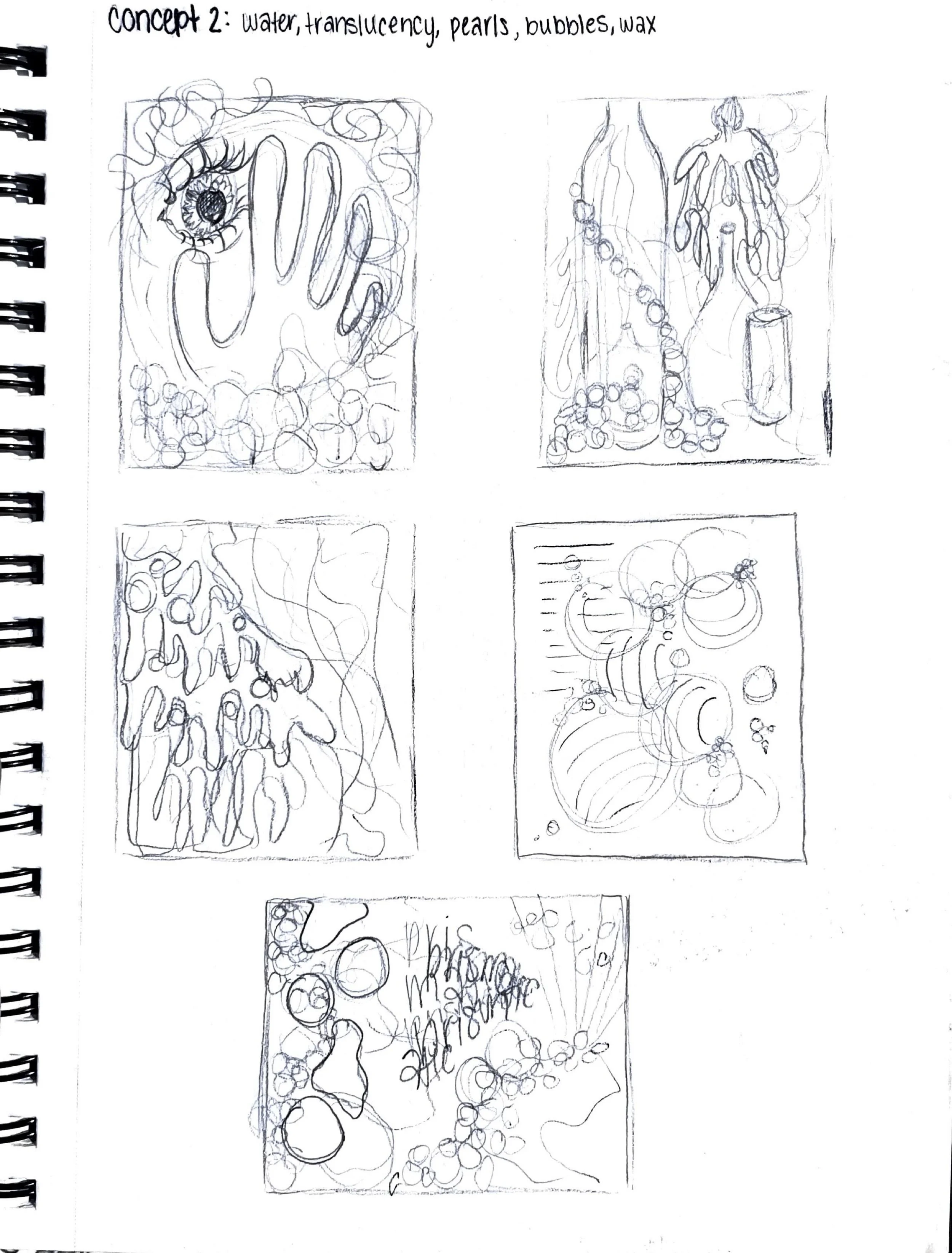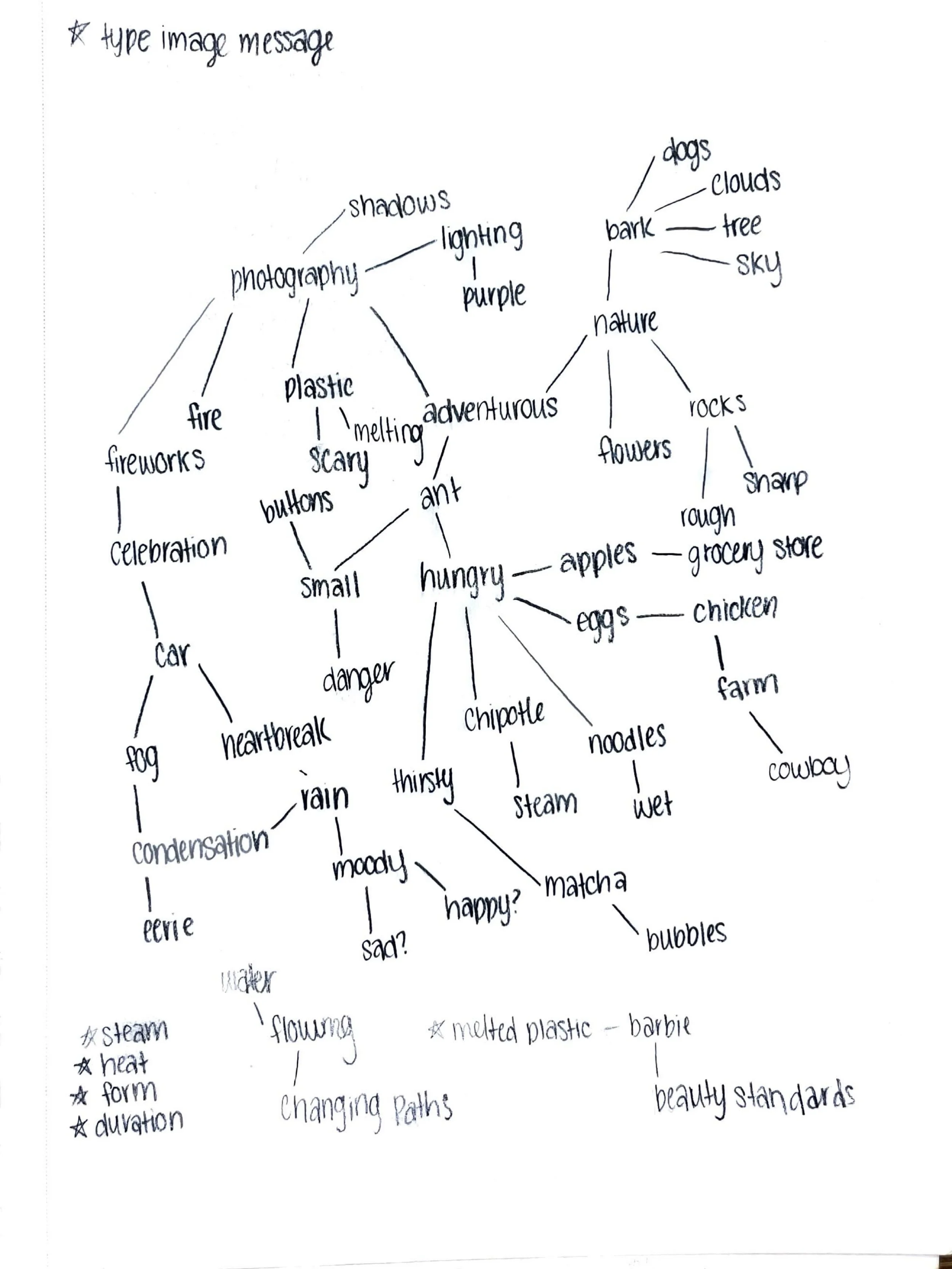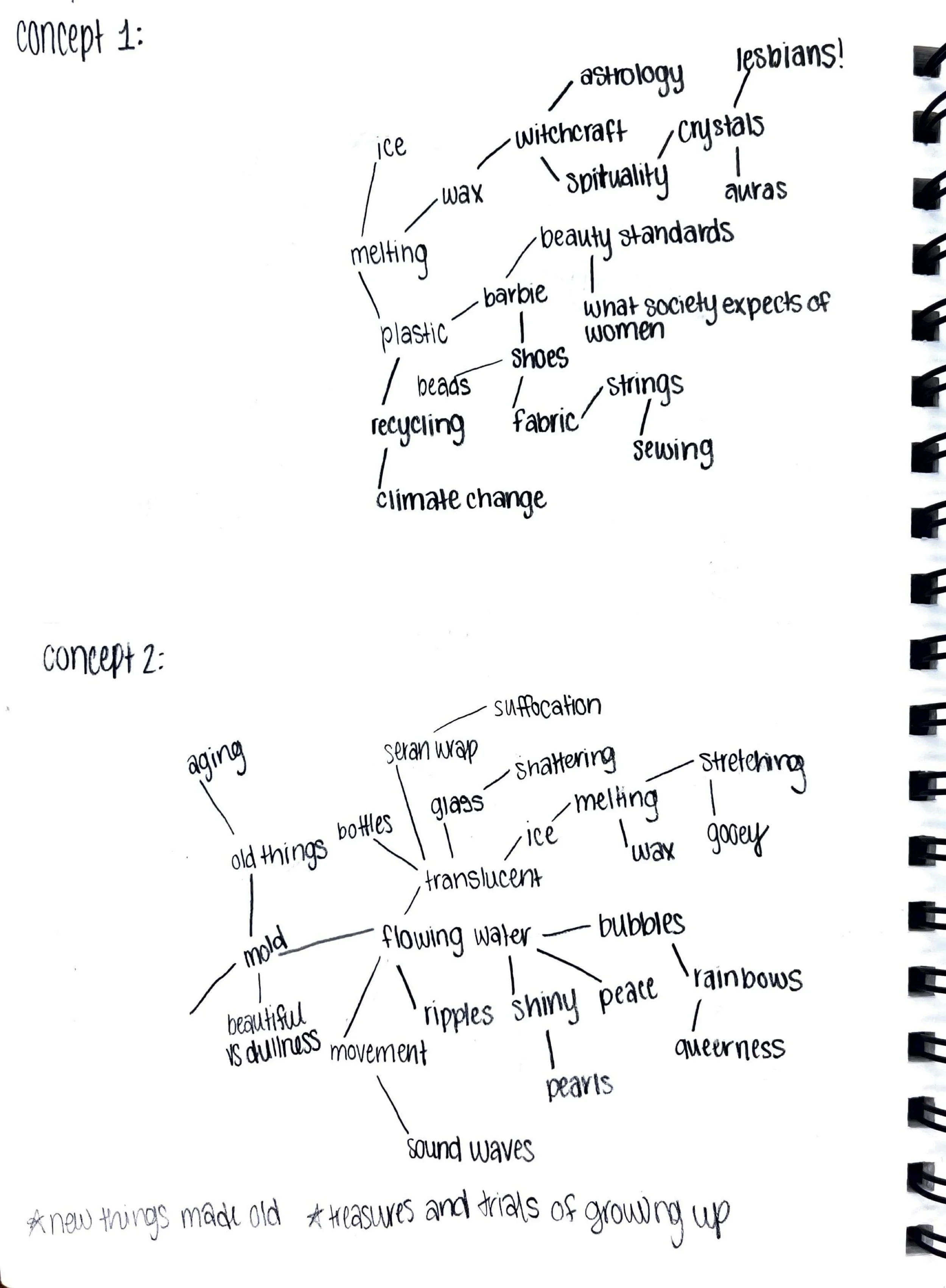I Used to Know
18x24”, photographs, plastic, type, and watercolor. Adobe Photoshop, Lightroom, and Illustrator.
Karolee Johnson Memorial Award recipient at the 2024 University Galleries Student Annual, Normal IL.
For this assignment, I was tasked with creating a poster using unconventional processes. The poster could not be commercial, but rather had to be social, environmental, political, cultural, etc. With my poster, I decided to explore the idea of what womanhood feels like. I wanted the poster to be abstract because the idea of womanhood is different for every single individual, but also full of symbolism that embodies the general emotions, feelings, and sense of self that comes with the territory. I incorporated hand-drawn typography into the poster reading, “What was I made for?” in free-flowing drips. I used the manipulated photos of plastic throughout the composition, representing the idea of women being seen as objects that can be shaped and molded to the liking of the consumer. Incorporated in the foreground of the composition are arms, stretching out and reaching into the unknown. In the mid-ground of the composition are hand-painted watercolor violets, which has been a symbol of lesbian love dating back as far as the 6th century BCE. Historically, violets were gifted between lesbians to express interest in a pact of secrecy since lesbianism was not widely accepted. I felt that these flowers not only added subtle femininity to the piece, but also make it more personal to me as much of my experience as a woman has been shaped by growing up in a home where I was not truly allowed to come to terms with my queer identity. In the background of the composition is a woman wearing a mask. Oftentimes, being a woman feels like not having a voice. Not being heard, not being taken seriously, not being respected or cared for, etc. Although there is a lot of meaning in this poster, I wanted it to be delicate, raw, and full of symbolism so that the viewers may be able to relate to it on many different levels, allowing them to create their own narrative from the imagery. Although womanhood is different for everyone, I wanted to create ac composition that can be related to in many different unique ways.







